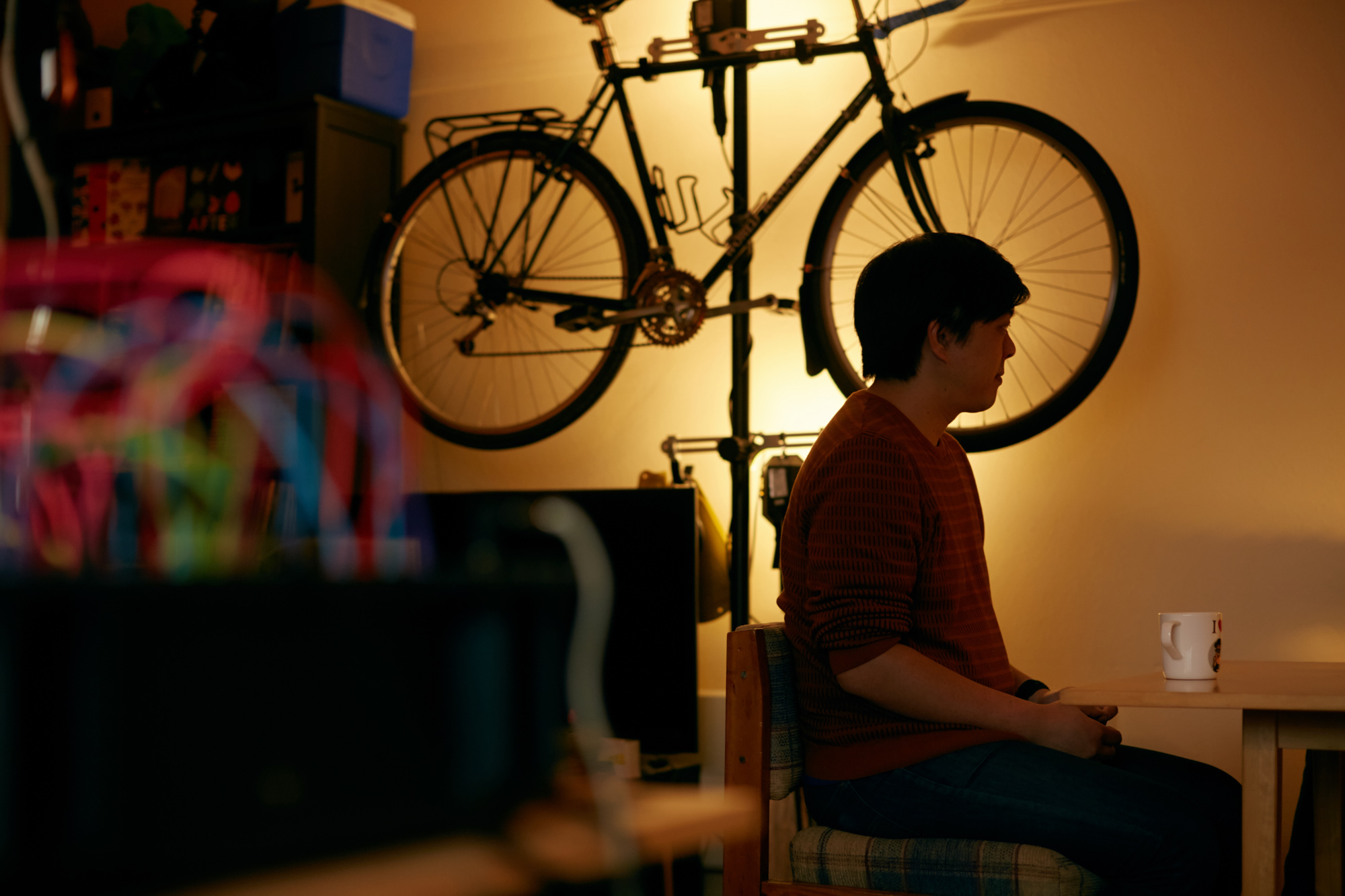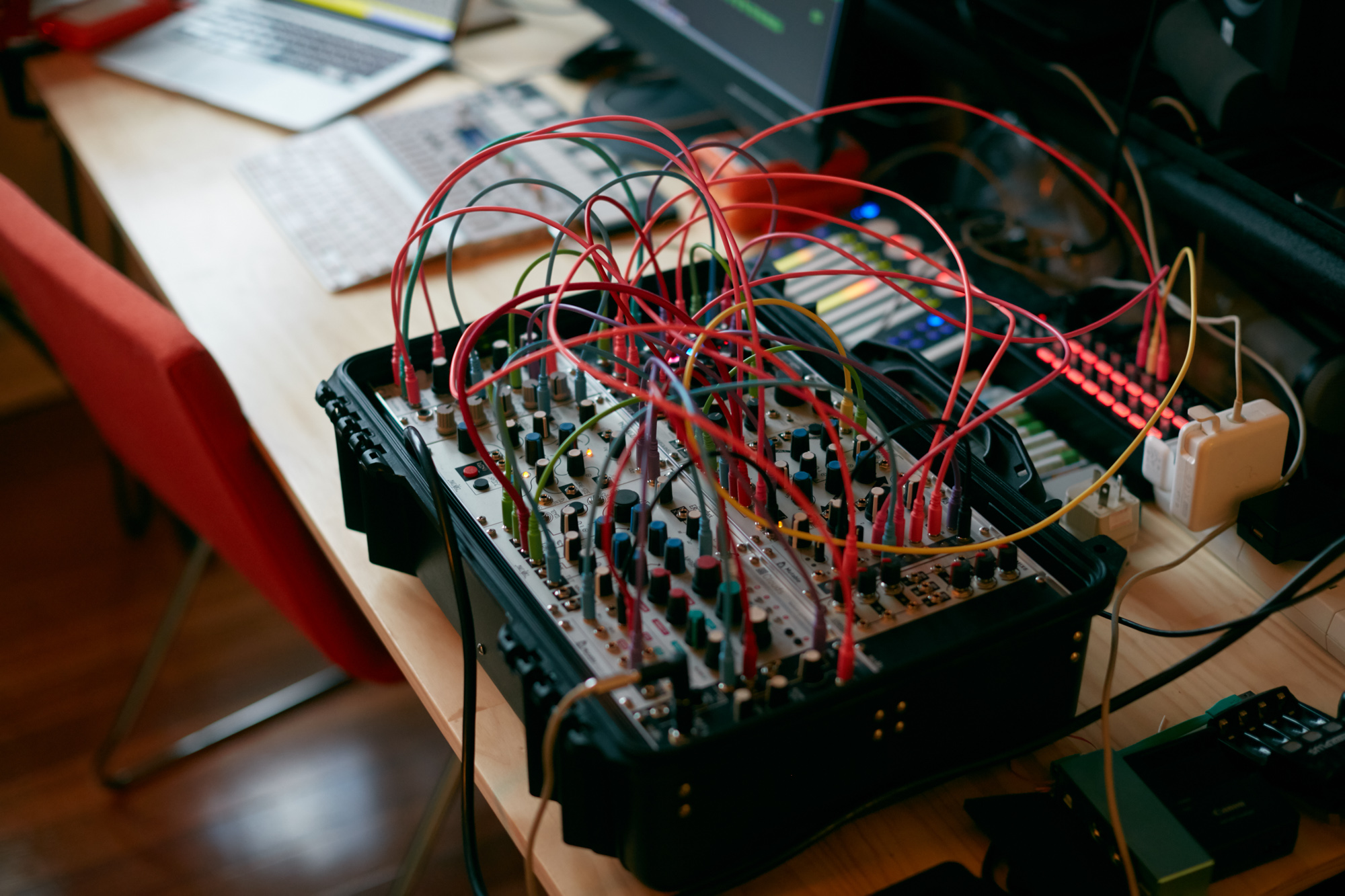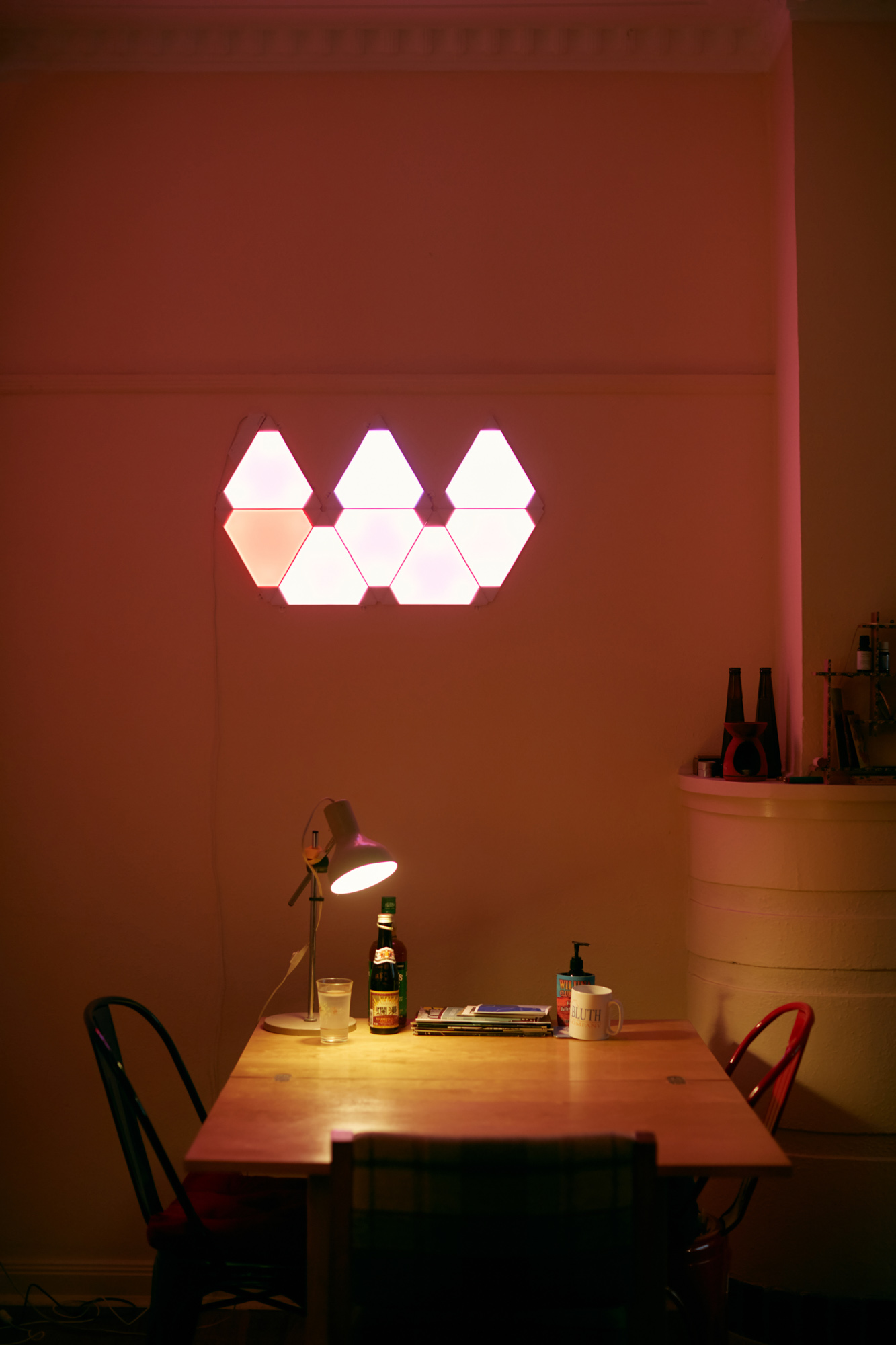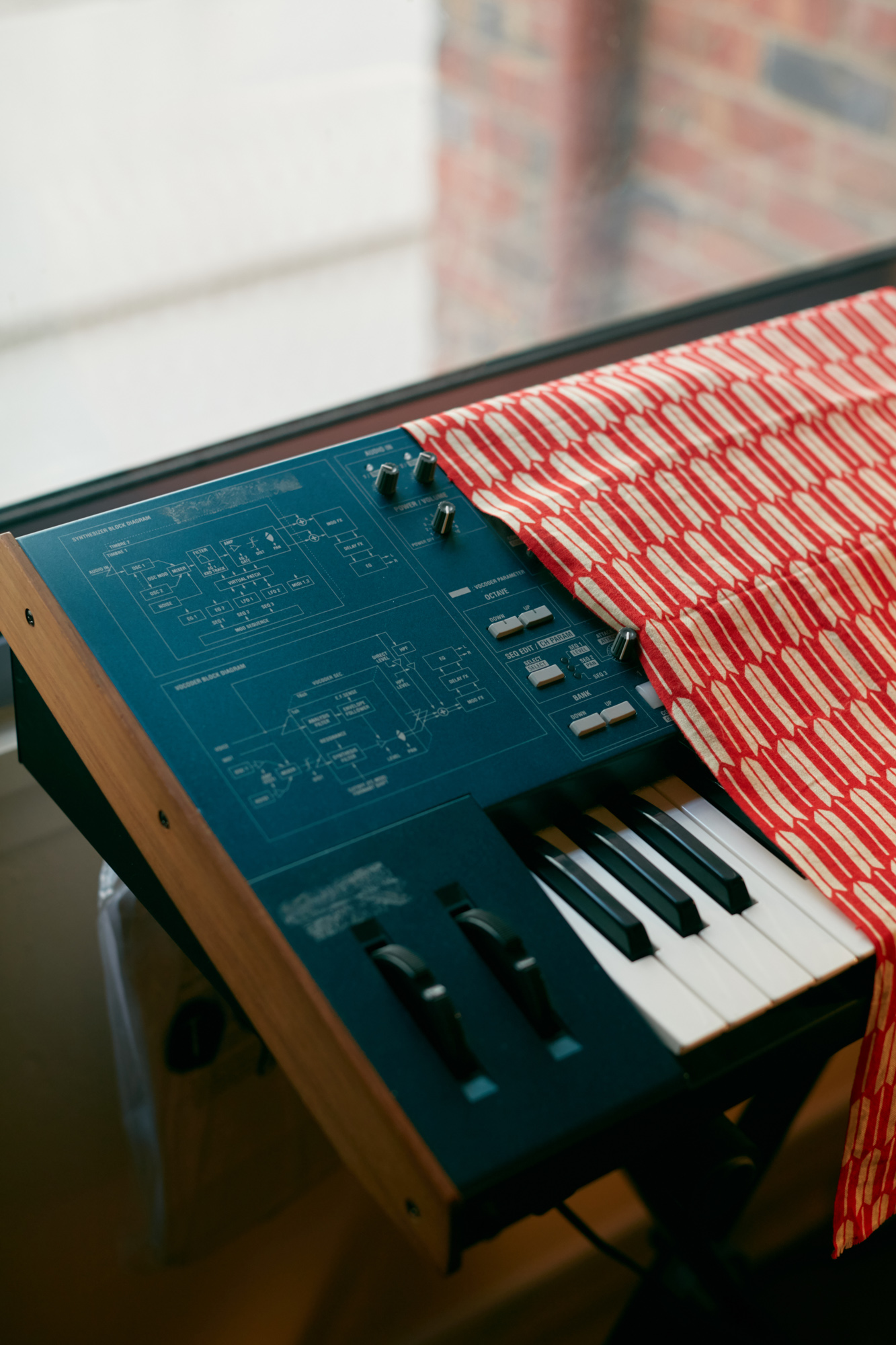Under and Over and Into and Between Mix by Jon Tjhia

For Assemble Papers, musician, podcaster, and Wheeler Centre senior digital editor Jon Tjhia has created a mixtape that combines expansive minimalism and ‘very stretched out sound’ with different takes on the human voice: “I pushed the mix through some heavy handed dynamic compression because I wanted its parts to squash together and have no option but to interact.”
Jon Tjhia makes music with a band called Speed Painters, but mostly he makes radio. Making radio is a large part of his job as senior digital editor at the Wheeler Centre where, more broadly, he also works with writing, video, images, internet and information. In 2010, Jon started a podcast called Paper Radio, and has produced two major podcast series in the past couple of years – Better Off Dead and The Messenger: “People will often tell you that making radio means you don’t sleep enough. I have found this to be mostly true.”
For Assemble Papers, Jon has created a mixtape that combines expansive minimalism and ‘very stretched out sound’ with different takes on the human voice- different ways of speaking, addressing a listener, presenting words, too (moving closer or further from direct address, the strictures of musical rhythm or speech rhythm, and from intimate space), the ways in which we communicate and reflect each other back, the way we speak through quotes and repeats – and some of his own recordings, including bits and pieces of conversations and phone calls. There is, in it, also a homespun piano version of Portishead’s ‘Western Eyes’ ripped from YouTube a while back: “I’m quite interested in how songs or ideas can live inside other ones – literally – and so I’ve kind of scooped the guts out of some pieces here, and filled them with other thoughts.
“What I love about radio, and about music, and about most things, actually, is that in making something, you’re afforded the opportunity to paint into a silence. You literally advance time forward into an abstract ‘space’ that doesn’t particularly exist. Obviously, time is this goopy non-linear thing now, and the mechanical forward motion is a little divorced from all of this. But I’ve just tried to tumble from one thing into the next here in a way that makes sense to me today, with lashings of textural/textual comfort.
“I’ve thrown a lot of things together, under and over and into and between each other, too. I always go into mixes hoping to fold more jaggedness in – acoustic drums or guitars, say – but electronic music can be a kind of irresistible prospect when part of what you’re fixated on is weaving acoustic spaces in and out of each other. (It’s not solely politesse.) I pushed the mix through some heavy handed dynamic compression because I wanted its parts to squash together and have no option but to interact.”
We visited Jon in his home studio in East Melbourne, which he shares with his charming cat, Gavin, for a whisky and a chat about sound, music, and Melbourne.
EARS #29: Under and Over and Into and Between, tracklisting:
0:00 Broadcast: A Breeze Through the Burford Spur
0:23 cLOUDDEAD – Apt. A (1)
0:29 Phone calls to Mali
0:50 La Monte Young – Dream House
1:30 A recorded conversation with Sugi, in Osaka
2:49 Farah – The Blessing
7:06 Andy Stott – Science & Industry
10:47 Freight trains at Newport
11:07 Philip Glass – Music in Fifths (1969) for Organ
12:33 Broadcast – The Sacred Marriage
13:25 Fear of Men – Island
16:29 Portishead – It Could Be Sweet
18:28 Adrian Klumpes – Be Still
19:59 Hodge – Flashback
22:15 Laurel Halo – Moontalk
26:20 ESPRIT – select.wav
27:08 Millie & Andrea – Drop the Vowels
30:39 Speed Painters – Footpath Underwater
36:20 Phone calls to Mali
36:58 Angelo G (?) – Western Eyes (Portishead cover, downloaded from YouTube some time ago)
37:12 Tim Prebble – Tui (field recording)
38:05 Synthesiser improvisation
38:36 A rain storm



AP: What is your favourite city in the world?
I don’t think in terms of favourites, but recently I’ve become a bit obsessed with Los Angeles. People will never not talk about it as a car city, but I’ll say, at least for myself, there’s something very strange and great about walking in Los Angeles.
When I spent a couple of weeks there last year, I walked for hours every day, and barely spoke to anyone during my whole visit. On foot, the city really never ends, and it’s laid out in apparently endless scraps of detail. As a visitor, naïve, walking toward no particular outcome – block by block, looping around and criss-crossing suburbs and neighbourhoods, as you do – was like crossing microclimate after microclimate. A map of mood swings. It’s not particularly user-friendly, or even friendly, and it embodies America’s two faces at once: optimism and decline. I felt lonely there, but never bored.
AP: What is your favourite building?
Buildings are funny, because they’re often so different from inside-out as they are outside-in. They often prove untrustworthy recipients of romance. I’m in Sydney as I write this, and I’ll often marvel at Patrick Blanc’s vertical gardens that cover the One Central Park apartments in Ultimo. They’re said to contain 70,000 plants of more than 350 species, mostly drawn from the Wentworth Falls area of the Blue Mountains. It’s amazing what can seem totally normal in 2017.
Insides-wise, though, I feel comforted by older Chinese dining halls and food courts. Particularly the kind you find in Sydney’s Chinatown; Melbourne’s are mostly disappeared or redeveloped (my favourite was Ong’s, which my family used to visit most weekends). I have a soft spot for earnest inflections.

AP: If there were no practical constraints, where would you live?
I don’t daydream about this sort of thing much, but I’d like to end up living in an area that’s geographically urban, and isolated from fuss. I don’t know what else to say; I like most things in the right doses. Actually, fuck it: if there were no practical constraints, I would live in a world that had gotten bored of fantasising about, and acceding to, its own destruction. What would I do there? Count my blessings every morning, noon and night. And then, begin.

AP: What comes to mind when I say ‘the culture of living closer together’?
I mean this simply: closer than what? Than ‘then’? Than ‘now’? Than ‘them’?
Sometimes, I feel like the most we can do for each other is to learn how to talk to (and live with) one another with generosity, patience and humour. No group or ideology is going to handle this for us. It’s up to us to figure that out on our own personal terms.
There are words that connote a ‘together’, and they are words like ‘share’, ‘listen’, ‘community’, ‘common’ and a hundred others – and many of those words have been hollowed of meaning, and sold back to us as clothing, tagline or property. As individuals, if we refuse to accept this – or at least, if we insist on replenishing those emptied, faltering terms – perhaps we might understand each other enough to get a foothold out of our emptied, faltering political contexts, too.



Many thanks to Jon for preparing this unique mixtape for us, which he described to us as ‘one long puffy noodle of sound’. Be sure to check out Jon’s podcast of fictional and non-fictional stories, Paper Radio. Many thanks also to Tom Ross for his brilliant photographs.